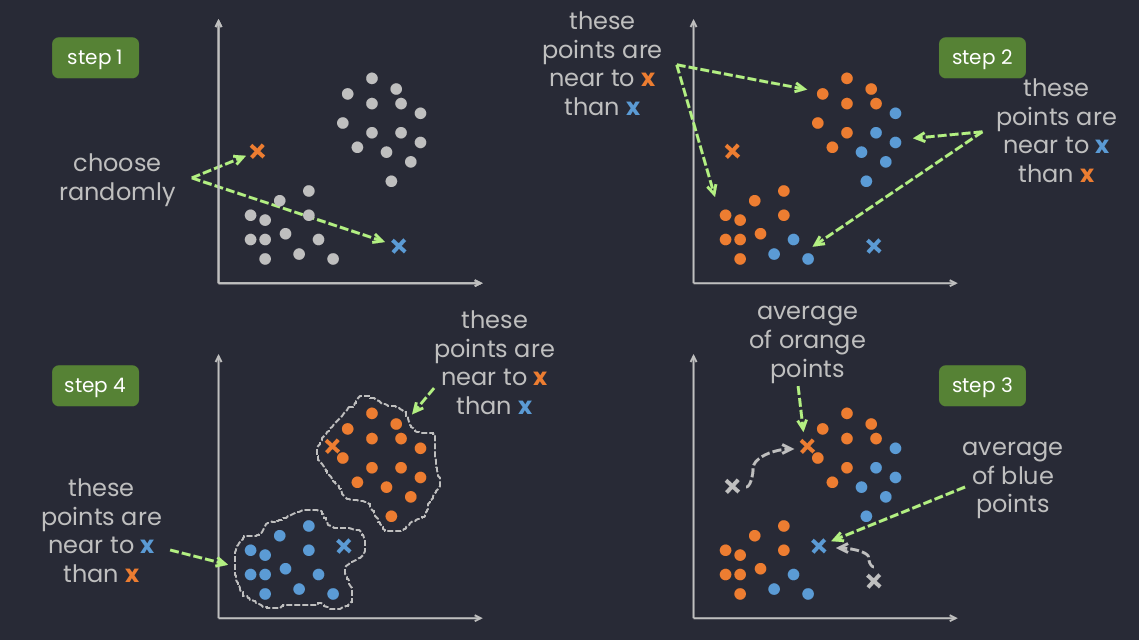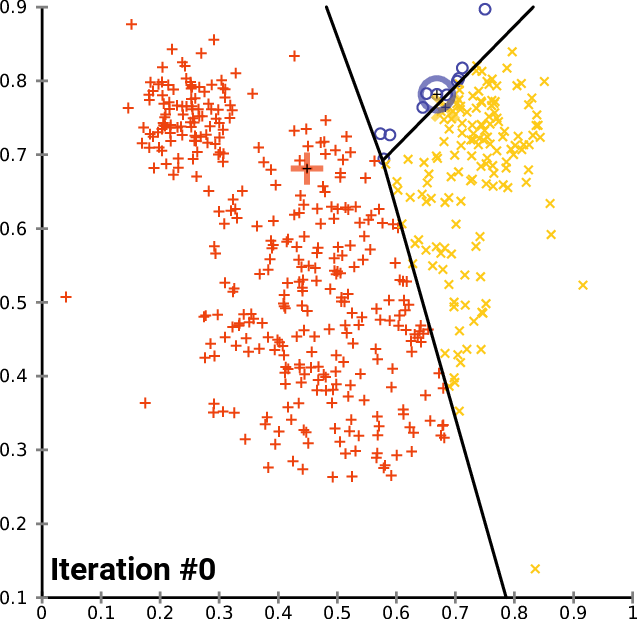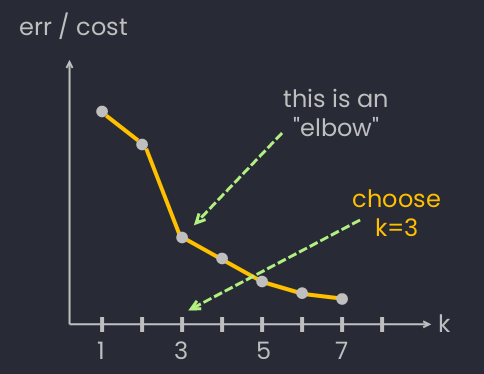The last modifications of this post were around 4 years ago, some information may be outdated!
This is a draft, the content is not complete and of poor quality!
K-Means is the most popular clustering method any learner should know. In this note, we will understand the idea of KMeans and how to use it with Scikit-learn. Besides that, we also learn about its variants (K-medois, K-modes, K-medians).
👉 Metrics for clustering methods.
K-Means
Idea?
- Randomly choose centroids ().
- Go through each example and assign them to the nearest centroid (assign class of that centroid).
- Move each centroid (of each class) to the average of data points having the same class with the centroid.
- Repeat 2 and 3 until convergence.

A simply basic steps of K-Means.

A gif illustrating the idea of K-Means algorithm. Source.
How to choose k?
Using "Elbow" method to choose the number of clusters .

Discussion
- A type of Partitioning clustering.
- K-means is sensitive to outliers ⇒ K-medoids clustering or PAM (Partitioning Around Medoids) is less sensitive to outliers[ref]
K-Means in code
from sklearn.cluster import KMeans
kmeans = KMeans(n_clusters=10, random_state=0) # default k=8kmeans.fit(X)
kmeans.predict(X)# or
kmeans.fit_predict(X)Some notable parameters (see full):
max_iter: Maximum number of iterations of the k-means algorithm for a single run.kmeans.labels_: show labels of each point.kmeans.cluster_centers_: cluster centroids.
K-Means in action
- K-Means clustering on the handwritten digits data.
- Image compression using K-Means -- Open in HTML -- Open in Colab.
K-medoids clustering
- Advantages:[ref]
- It is simple to understand and easy to implement.
- K-Medoid Algorithm is fast and converges in a fixed number of steps.
- PAM is less sensitive to outliers than other partitioning algorithms.
- Disavdvantages:[ref]
- The main disadvantage of K-Medoid algorithms is that it is not suitable for clustering non-spherical (arbitrary shaped) groups of objects. This is because it relies on minimizing the distances between the non-medoid objects and the medoid (the cluster centre) – briefly, it uses compactness as clustering criteria instead of connectivity.
- It may obtain different results for different runs on the same dataset because the first k medoids are chosen randomly.
- Different from K-Means:
- K-Means:
- Final centers no need to be points in data.
- Measure generally requires Euclidean distance.
- Sensitive to outliers.
- K-Medoids:
- Final Centers is actual points in data. They're called medoids or exemplars.
- Measures can be arbitrarily dissimilar.
- Robust to outliers.
- K-Means:
The idea:
- (Like KMeans'): choose randomly points (no need to be a point in data)
- (Like KMeans'): assign labels to points based on chosen points in step 1.
- (Different from KMeans):
- (Like KMeans'): repeat the steps.
Choose k by Silhouette
It's better than Elbow method to choose the number of clusters .
👉 Check this note.
References
- Luis Serrano -- [Video] Clustering: K-means and Hierarchical.
- Andrew NG. -- My raw note of the course "Machine Learning" on Coursera.

💬 Comments